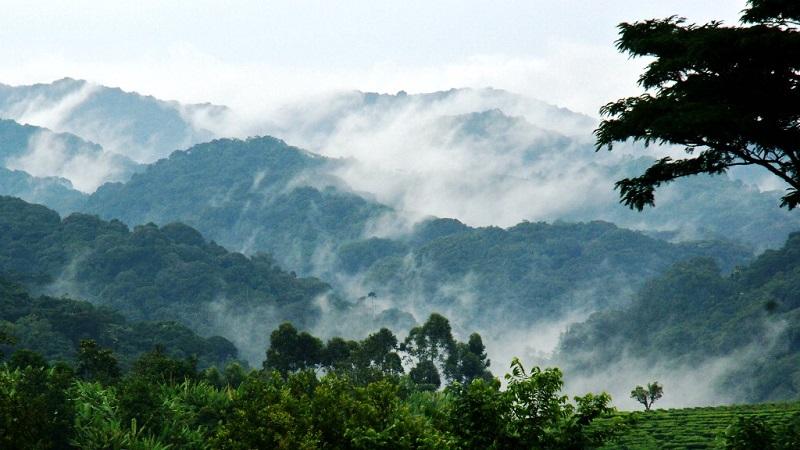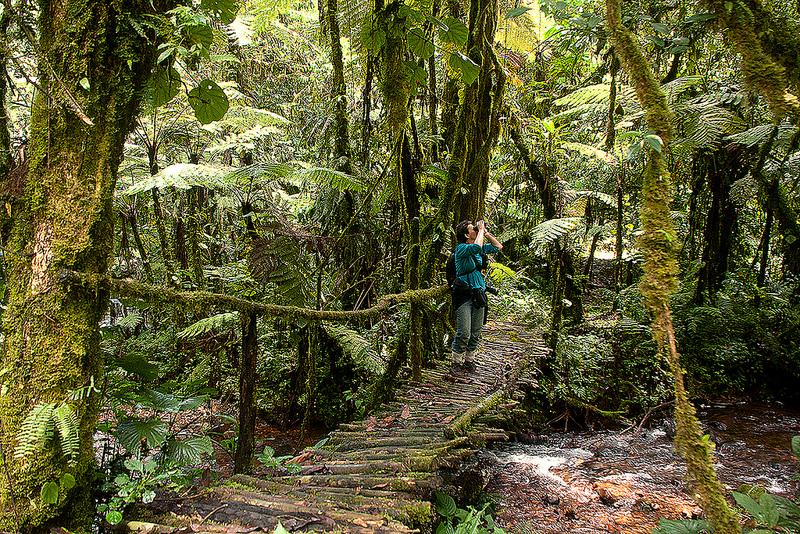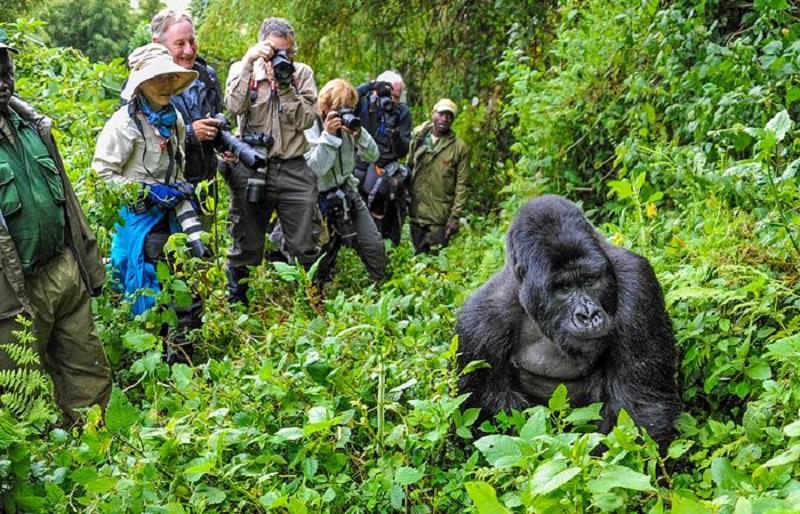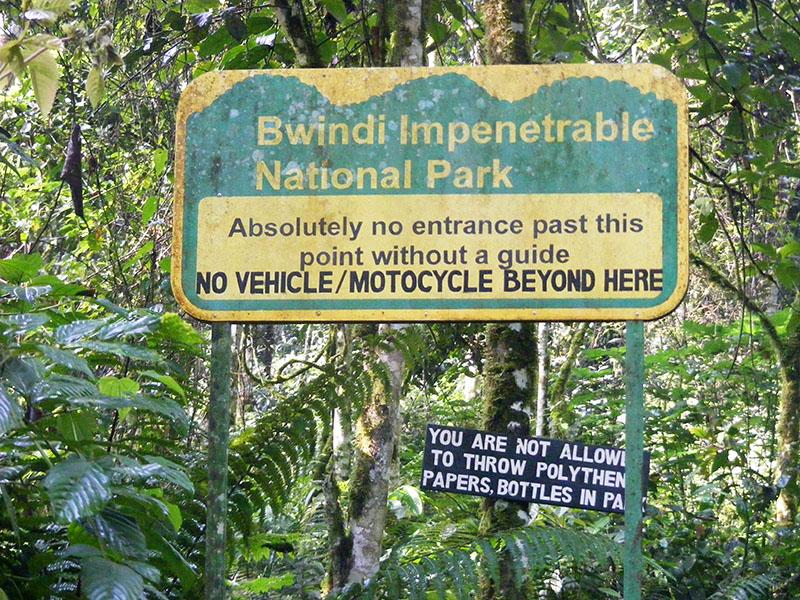Bwindi Impenetrable National Park offers some of the most memorable wildlife experiences in Uganda. It is located in the southwest corner of the country, along the border with the Democratic Republic of the Congo, this park is globally renowned as a sanctuary for the endangered mountain gorillas. It is one of only four parks on Earth where visitors can have close encounters with these magnificent creatures, a rare subspecies that are among our closest living relatives.
Spanning 124 square miles, Bwindi’s landscape is a blend of untamed mountainous and lowland forest, draped over steep ridges and valleys. This ancient forest, over 25,000 years old, is one of the most biologically diverse in Uganda. It serves as the source for five major rivers, all of which eventually flow into Lake Edward to the north.
Recognized for its critical role in conserving mountain gorillas and other rare or endemic species, Bwindi Impenetrable National Park was declared a national park in 1991 and inscribed as a UNESCO World Heritage Site in 1994. This guide will take you through everything you need to know to make the most of your visit to this extraordinary park.
Overview

Bwindi Impenetrable National Park is one of Africa’s oldest and most biologically diverse rainforests, dating back over 25,000 years. The park’s rugged landscape features steep ridges, deep valleys, and dense vegetation, providing a sanctuary for a wide array of flora and fauna. Bwindi’s primary allure is its population of mountain gorillas, but the park is also a haven for birdwatchers, botanists, and nature enthusiasts.
Wildlife in Bwindi Impenetrable
Bwindi is most famous for its mountain gorillas, with about 459 individuals living within the park. Gorilla trekking is the park’s main attraction, offering visitors the unique opportunity to observe these magnificent primates in their natural habitat. Gorilla treks can vary in length and difficulty, as the gorillas move through the dense forest.
Bwindi is home to several other primate species, including chimpanzees, black-and-white colobus monkeys, L’Hoest’s monkeys, and vervet monkeys. These primates add to the rich biodiversity of the park and enhance the overall wildlife viewing experience. Bwindi is a birdwatcher’s paradise, with over 350 bird species recorded, including 23 endemics.
The park’s diverse habitats support a wide variety of birds, from colorful species like the African green broadbill and Shelley’s crimsonwing to raptors and forest specialists. Bird watching in Bwindi is particularly rewarding due to the presence of many Albertine Rift endemics.
How to get there

Traveling from Kampala to Bwindi Impenetrable National Park by road is a common option, offering a scenic journey through southwestern Uganda. The distance is approximately 460 kilometers (286 miles), and the drive typically takes about 8 to 10 hours, depending on road conditions and the route taken. The journey passes through picturesque landscapes, small towns, and local villages, providing a glimpse into rural Ugandan life.
For a quicker and more convenient option, flying is an excellent choice. Several daily flights operate from Entebbe International Airport near Kampala to airstrips close to Bwindi, such as Kihihi and Kisoro. The flight takes about 1 to 1.5 hours. Upon arrival, visitors are typically met by their lodge or camp’s guides and vehicles for a short drive to the park.
When to Visit
Bwindi Impenetrable National Park can be visited year-round, but the best time to visit depends on your preferences and activities. The dry season, from June to September and December to February, is the best time for gorilla trekking. During these months, the trails are less muddy, and the weather is generally more favorable for trekking.
The dry season also offers good conditions for birdwatching and other outdoor activities. The wet season, from March to May and October to November, sees heavier rainfall, which can make trekking more challenging due to muddy and slippery trails. However, the wet season brings lush, green landscapes and fewer tourists, providing a more intimate experience.
Surrounding communities
The communities surrounding Bwindi Impenetrable National Park are an integral part of the park’s cultural and social landscape. The Batwa people, indigenous forest dwellers, are among the most notable groups. Other local communities, primarily agriculturalists, include the Bakiga and Bafumbira.
These communities have adapted to life on the forest edges, cultivating crops and engaging in sustainable practices. Many local residents are involved in conservation efforts and community-based tourism initiatives. These provide economic benefits while promoting the preservation of their cultural heritage and natural environment.
Other activities to do

Gorilla trekking is the highlight of any visit to Bwindi. Permits are required and should be booked well in advance due to high demand. Treks are led by experienced guides and trackers who take you deep into the forest to observe a gorilla family. With over 350 bird species, Bwindi is a top destination for birdwatchers. Guided birding walks are available, led by knowledgeable local guides who can help you spot and identify a variety of birds, including many Albertine Rift endemics.
Engaging with local communities around Bwindi offers insights into the region’s cultural heritage. The Batwa cultural tour offers a glimpse into the lives of the Batwa people, who lived in Bwindi forest before it became a national park. Visitors can learn about their hunting and gathering practices, traditional medicines, and listen to ancient stories and songs.
Park Fees
Visiting Bwindi Impenetrable National Park requires payment of various fees, including gorilla trekking permits, which are crucial for conservation efforts. As of 2024, the fees are as follows:
- Gorilla Trekking Permit: USD 700 per person for foreign non-residents, USD 600 per person for foreign residents, and UGX 250,000 for East African citizens.
- Park Entrance Fee: USD 40 per adult per day for foreign non-residents, USD 30 per adult per day for foreign residents, and UGX 20,000 per adult per day for East African citizens.
These fees are subject to change, so it’s advisable to check with the Uganda Wildlife Authority (UWA) or your tour operator for the most current rates before your visit.
FAQs: Touring Bwindi Impenetrable National Park
Do I Need a Car to Tour the Park?
Yes, having a car is essential to tour Bwindi Impenetrable National Park due to its remote location and rugged terrain. Most visitors either rent a 4×4 vehicle or book guided tours through safari operators. A 4×4 vehicle is recommended for navigating the park’s rough roads and accessing various trailheads for gorilla trekking and other activities.
Are Unguided Walks Allowed in the Park?
No, unguided walks are not allowed in Bwindi Impenetrable National Park for safety reasons. The park is dense and home to potentially dangerous wildlife, including gorillas and forest elephants. All walks, especially gorilla treks, must be conducted with experienced guides and rangers who are knowledgeable about the area and trained to ensure visitor safety.
Conclusion
Bwindi Impenetrable National Park offers a unique and enriching experience with its diverse wildlife, particularly the majestic mountain gorillas. Whether trekking through the dense forest, birdwatching, or engaging in cultural activities, visitors are guaranteed unforgettable encounters and lasting memories.



